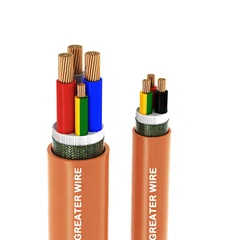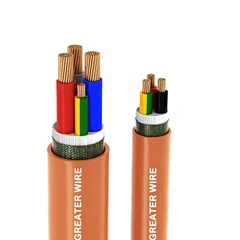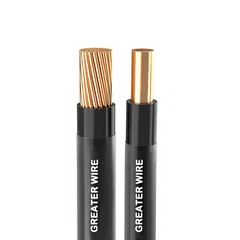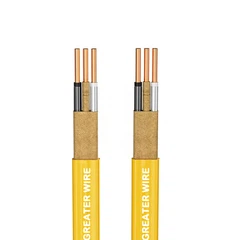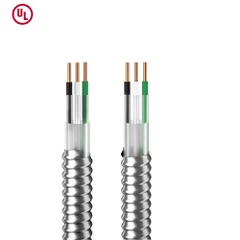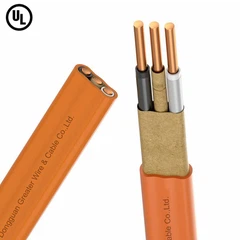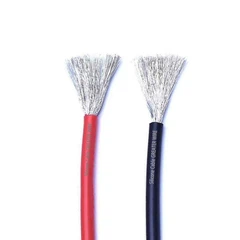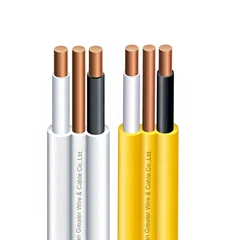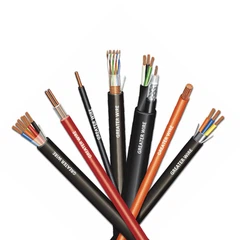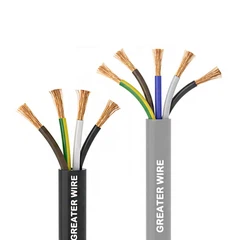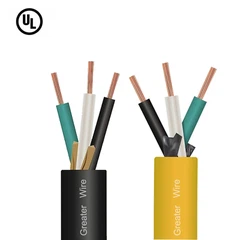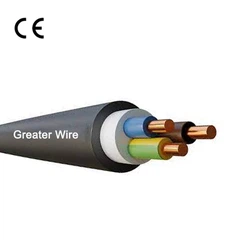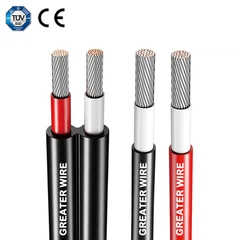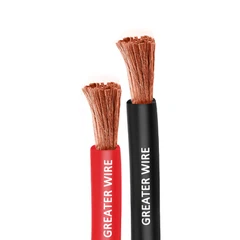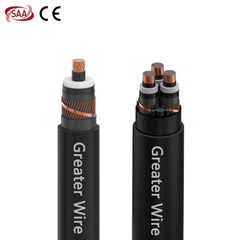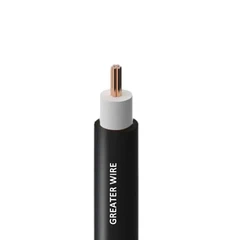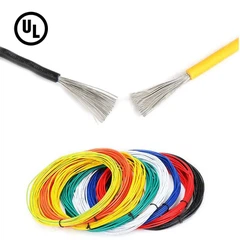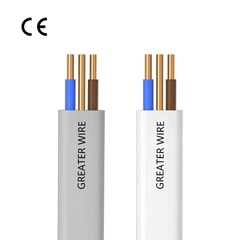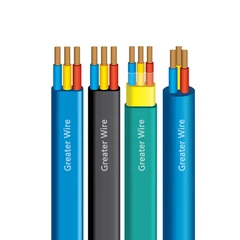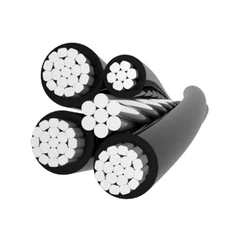1. What is RW90 Wire?
RW90 wire is a type of single-conductor electrical cable designed for use in dry and damp locations. The name "RW90" comes from its insulation and temperature rating:
R – Rubber or cross-linked polyethylene (XLPE) insulation
W – Suitable for wet or damp locations
90 – Rated for up to 90°C in dry environments
RW90 is particularly common in Canadian electrical systems and is compliant with CSA standards. It's available in both copper and aluminum conductor options, making it suitable for various voltage and amperage requirements.
2. RW90 Wire Specifications and Construction
2.1 Conductor Types
RW90 wire is available with either copper or aluminum conductors:
RW90 copper wire: Offers higher conductivity, corrosion resistance, and mechanical strength.
RW90 aluminum wire: More affordable and lighter in weight, ideal for long-distance or large-scale installations.
2.2 Voltage Rating
Typically rated for 600V or 1000V (1kV), depending on the installation needs.
2.3 Insulation
Insulated with cross-linked polyethylene (XLPE), which provides excellent heat resistance, durability, and environmental protection.
2.4 Available Sizes
Common sizes include RW90 6AWG, 4AWG, 2AWG, and larger, suitable for different current capacities and applications.
3. Common Applications of RW90 Wire
3.1 Residential Wiring
RW90 wire is frequently used in residential settings, especially for:
Connecting circuit breakers to electrical panels
Wiring inside walls or ceilings
Service entrance cables when placed in conduit
Its heat resistance and high performance make it ideal for home electrical systems.
3.2 Commercial and Industrial Installations
In larger buildings, RW90 is used for:
Power distribution systems
Conduit installations in mechanical rooms
Lighting systems and subpanels
It is often preferred for industrial settings due to its rugged insulation and compliance with Canadian Electrical Code (CEC) standards.
3.3 Panel and Transformer Connections
RW90 wire is commonly used for connecting:
Switchboards
Distribution panels
Transformers in both indoor and outdoor environments
3.4 Suitable Environments
Dry Locations: RW90 performs well at high temperatures up to 90°C.
Damp Locations: XLPE insulation protects the conductor from moisture, making it suitable for use in wet environments (though direct burial is not allowed unless in conduit).
4. RW90 vs Other Electrical Wire Types
RW90 is often compared to other types of electrical wire such as THHN, XHHW, and TECK. Here's how it stacks up:
|
Feature |
RW90 Wire |
THHN Wire |
XHHW Wire |
|---|---|---|---|
|
Temp Rating |
90°C (dry/wet) |
90°C (dry), 75°C (wet) |
90°C (wet/dry) |
|
Insulation Type |
XLPE |
Nylon/PVC |
XLPE |
|
Outdoor Use |
Yes (in conduit) |
Limited |
Yes |
|
Direct Burial |
No (unless in conduit) |
No |
Some types allowed |
5. RW90 Copper vs. RW90 Aluminum Conductors: How to Choose?
When selecting RW90 cable, one of the most critical decisions is whether to use copper or aluminum conductors. While both serve similar purposes, they differ significantly in terms of performance, cost, and installation requirements.
5.1 RW90 Copper Conductors: Key Advantages
Copper is widely recognized as a superior electrical conductor. Its benefits include:
Higher Conductivity: Copper offers better electrical conductivity than aluminum, resulting in lower resistance and less energy loss.
Greater Mechanical Strength: Copper's tensile strength is higher, making it more resistant to breakage-ideal for environments with vibration or frequent cable movement.
Superior Corrosion Resistance: Copper oxidizes more slowly and is less prone to corrosion over time, ensuring longer service life.
Smaller Size for Same Amperage: Because copper can carry more current in a smaller gauge, it's ideal for space-constrained installations like panels and control boxes.
Best applications for RW90 copper:
Data centers, hospitals, and high-rise buildings requiring high reliability
Internal panel wiring, bus bar connections, or control cabinet layouts
5.2 RW90 Aluminum Conductors: Cost-Effective & Lightweight
RW90 aluminum wire is another widely used option, particularly where budget or weight constraints are a concern.
Lighter Weight: Aluminum is about ⅓ the weight of copper, making it easier to transport and install.
Lower Material Cost: Aluminum is significantly cheaper than copper, offering 30–60% cost savings in large-scale projects.
Larger Cross-Section Needed: Due to lower conductivity, aluminum conductors must be sized larger (e.g., RW90 2AWG aluminum to replace RW90 4AWG copper for equivalent ampacity).
Special Handling Required: To prevent oxidation, aluminum wire terminals should be treated with anti-oxidant compounds and must be terminated with AL-rated lugs or connectors.
Best applications for RW90 aluminum:
Industrial facilities, utility feeders, and residential power distribution
Long-distance underground runs (when installed in conduit)
6.RW90 Cable Installation Guidelines
While RW90 cable is highly versatile and durable, proper installation practices are essential to ensure safety, longevity, and compliance with electrical codes.
6.1 Conduit Requirement
RW90 cables must be installed inside conduit. They are not designed for open-air installation. Common compatible conduits include:
Rigid PVC (plastic)
EMT / IMC / RMC (metallic)
HDPE conduit for underground applications
Conduits provide mechanical protection and moisture resistance, especially in outdoor or below-grade installations.
6.2 No Direct Burial
RW90 cables are not rated for direct burial without conduit. The insulation, while robust, lacks a metallic armor or sheathing for soil conditions.
Risks: Direct contact with soil can cause abrasion, insulation degradation, and eventual cable failure.
Proper method: Use HDPE or PVC conduit to house the RW90 cable underground.
6.3 Ampacity & Temperature Ratings
Although RW90 is rated for 90°C (194°F), actual ampacity depends on:
Ambient temperature
Number of cables grouped together (derating required)
Installation type (in wall, ceiling, or underground)
Refer to CEC or NEC ampacity tables to determine the correct wire size and prevent overheating.
6.4 Minimum Bending Radius
Improper bending can damage insulation. Follow these general guidelines:
Copper RW90: Minimum bend radius = 6× cable diameter
Aluminum RW90: Minimum bend radius = 8× cable diameter
Always avoid sharp bends or applying force directly on the conductor.
6.5 Proper Termination Techniques
Aluminum conductors: Must be treated with an anti-oxidant compound at connection points.
Use compression lugs or terminals rated for aluminum or dual-rated (Al/Cu).
Torque all terminal screws properly to prevent thermal loosening or arcing.
6.6 Code Compliance
RW90 cables must adhere to national and local codes:
Canada: Compliant with CEC (Canadian Electrical Code)
U.S. Projects: Some RW90 cables may also carry UL/NEC certification, allowing use under NEC Article 310 (confirm markings)
Always check local jurisdictional requirements before installation.
Dongguan Greater Wire & Cable Co., Ltd. focuses on standardized and serialized cable production. All product parameters are clear and well documented, supporting drawing docking and third-party testing. We save you the trouble of selection and improve decision-making efficiency. Contact us now to request a sample manual or technical white paper, and we will provide you with the best cable selection solution to match your project needs. Choosing professionalism means choosing efficiency and peace of mind.

